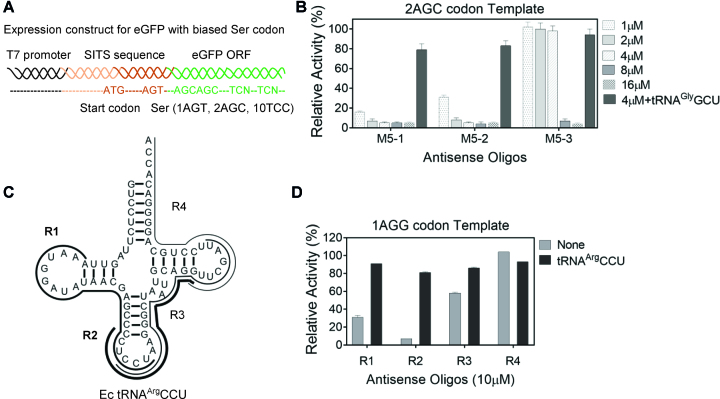Figure 2.
Testing the ability of the antisense oligonucleotides to selectively inactivate tRNA isoacceptors in E. coli cell-free translation system. (A) The schematic representation of the eGFP fluorescent reporter construct for evaluation of tRNASerGCU levels in cell-free system. The wt eGFP-coding ORF designed with biased Ser-codons is prefaced by Species Independent Translation Initiation Sequence (SITS) (27) that enables translation in both pro- and eukaryotic cell-free systems. (B) Translational activity of the 2AGC-codon template in E. coli lysate pre-treated with oligonucleotides in the presence or absence of synthetic tRNAGlyGCU. The M5-sequence analogs M5-1,-2,-3 contain various percentages of modified residues (100%, 75% and 46%, respectively). The concentration of the antisense oligonucleotides for lysate treatment is indicated while tRNAGlyGCU is added to final concentration of 20 μM in the translation reaction. The relative translation activity was calculated as the percentage of activity of the parental lysate. (C) The schematic representation of the methylated RNA oligonucleotides targeting four regions of tRNAArgCCU (R1, 2, 3, 4). Each oligonucleotide is represented by a black line with thickness proportionate to their inhibition efficiency as shown in Figure 2D. (D) Translational activity of eGFP-coding template harboring single AGG (Arg) codon (Supplementary Table S2) in E. coli lysate treated with 10 μM oligonucleotides R1–R4. The expression activity is represented as described in (B). Data in B and D represent the mean and standard deviations of at least two independent experiments.

